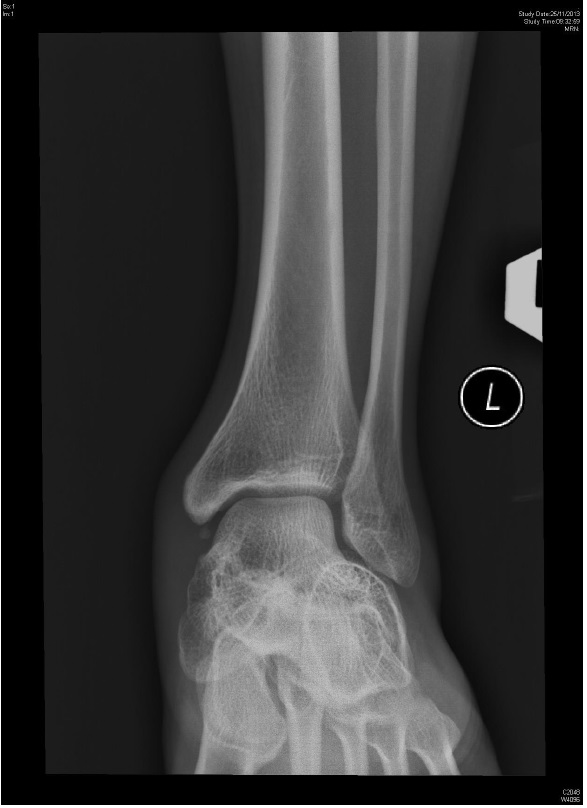Answer of May 2014
Clinical History:
This 19-year-old gentleman complained of pain after an ankle sprain. Radiographs of the opposite ankle, taken for comparison, were normal.
Imaging Findings:
- “C sign” – Cortical continuity extending from the posterior aspect of the talar dome to the sustentaculum tali on lateral projection.
- Indistinct subtalar joint space.
- Dysmorphic sustentaculum tali, with curved rather than flat undersurface.
- “Ball and socket” talocrural joint on frontal view.
- Small osseous body below medial malleolus likely secondary to remote trauma.
Diagnosis:
Talocalcaneal coalition and associated “ball and socket” ankle joint.
Discussion:
Tarsal coalition is defined
as abnormal union of two or more tarsal bones by bony, cartilaginous or fibrous
bridging.
The estimated prevalence is about 1% in the general population, presenting usually in childhood or early adulthood in isolation or with other congenital abnormalities. Occurrence is bilateral in about 50% of cases.
Talocalcaneal and
calcaneonavicular varieties account for 90% of tarsal coalitions, with a
roughly equal prevalence of the two types.
Classic radiographic features in congenital talocalcaneal coalition are the “C
sign”, talar beak, and dysmorphic sustentaculum tali. These signs are useful for differentiation
from acquired causes of subtalar joint space loss such as surgical arthrodesis
and chronic arthritis. The talar beak occurs because of impaired subtalar joint
motion resulting in abnormal biomechanics at the talonavicular joint, and is
absent in some cases (such as the presented case).
Diagnosis can often be made based on radiographs, though CT and MRI are useful
when radiographic findings are equivocal or when surgery is planned by
delineating the type and extent of coalition.
Treatment is conservative in the majority of
cases with orthotics and NSAIDs, while surgical mobilisation of the middle
facet can be performed for refractory symptoms.
“Ball-and-socket” ankle, which refers to abnormal rounding of the talar dome and ankle mortise, is found in only a minority cases of tarsal coalition. However, ball-and-socket ankles have a high incidence (75%) of tarsal coalition. It is theorised that the joint adapts to the loss of subtalar movement and adopts the ball-and-socket shape at around 2-4 years of age when weight-bearing begins. Ball-and-socket ankle is not specific for tarsal coalition, however, and can occur with neurological disorders (e.g. spina bifida) and other limb abnormalities (e.g. shortened tibia). The characteristic morphological appearance and associated talocalcaneal coalition allow easy differentiation from epiphyseal dysplasia.

